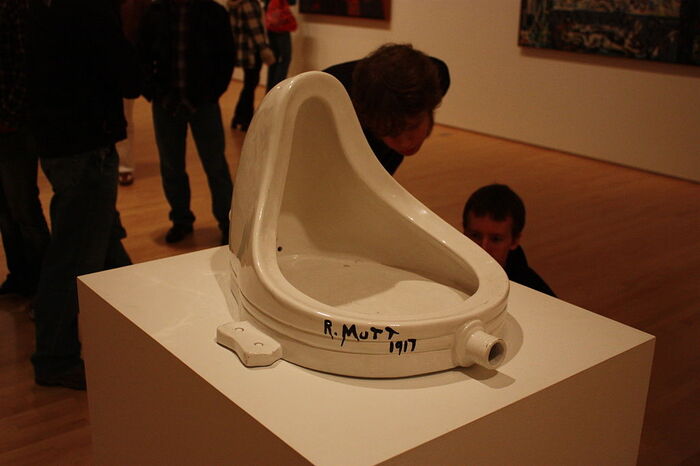Embracing the era of AI art
While AI-produced art is never a substitute for the real thing, it’s a realm that needs to be explored, asserts Olga Kacprzak

Whether we are using smart home devices, listening to a recommended playlists on Spotify, or asking Siri about the meaning of life, our lives revolve around interacting with AI powered technologies. These technologies use algorithms to learn from our behaviour. And as they learn from patterns, they are increasingly able to come up with predictions, resembling a human learning process. Soon, most likely, almost every aspect of our lives will depend on AI systems. It is then no surprise, then, that AI has also invaded the arts. Many ask whether intelligent machines can create art. Still, the question we perhaps should be asking is whether we really need them to.
Last summer, researchers from Rutgers University, College of Charleston and Facebook’s AI Research Group developed an algorithm that allows AI to create art which experts could not distinguish from human-made artworks. The machine was taught about art styles and then forced to generate novel images that do not follow established canons, which resembles a human creative process. The experiment, perhaps unsurprisingly, resulted in a collection of abstract works depicting shapes and colours that did not form any recognisable pattern. Yet, many experts, unaware of the artworks’ provenance, described them as more beautiful or inspiring than the human-made ones that were part of the experiment.
“Computers ... lack the ability of thinking intuitively or abstractly”
Another experiment made the headlines recently. Yamaha Corporation showcased a new kind of AI technology that translated the movements of renowned dancer Kaiji Moriyama into musical notes on a piano. The performance, accompanied by the Berlin Philharmonic Orchestra Scharoun Ensemble, presented an expression that fuses body movements and music. Moriyama carried four types of sensors on his back, wrists and feet that translated his movements into sensory data. The data was then transferred into an AI system equipped with an original database that links movements and melody. The AI on the system created suitable melody data from the dancer’s movements and shipped it to a Yamaha player piano, which translated it into sound. Moriyama explained that his movements did not simply generate random sounds as he learned to control the system while preparing his choreography.
Questions that immediately spring to mind when looking at such experiments are what makes art creative, and whether it is possible for a machine to emulate it. AI technologies that are presently in use are capable of learning, rather than thinking, like humans. As the resulting sounds and images are products of a sophisticated code, it is perhaps difficult to see such experiments as more than just impressive trials of human ability to create new forms of expression.
Why do we admire art? It is not merely about the artwork as an end result; the meaning conferred on the work by its creator is also fundamental. We admire the subtle smile of Mona Lisa, or lose ourselves in the sound of Kind of Blue for different, often subjective reasons. But in many cases, we pay close attention to the relationship between the artist and the work. Art is derived from the very idea of experiencing the world as a human, with all its joys and struggles. It reflects an idea that can be voiced and expressed using tools such as a dancer’s body, a piano or paint and a brush. It’s as much about the audience’s experience as about the personal relationship between the artist and the artwork.
Computers can deal with data in ways that far exceed human capabilities, but they lack the ability of thinking intuitively or abstractly, which is essential in the process of artistic creation. Dr Mateja Jamnik, an AI expert, emphasises this, claiming that everything is going in the direction of augmenting human performance, which will enable humans to concentrate on the areas where they are intrinsically better, like strategy, creativity and empathy.
Should we stop using AI-powered technologies to create art? By all means, no. Human curiosity is a huge driving force behind all breakthrough inventions and it is natural that we want to test how machines could imitate creative processes. But as long as machines do not experience the world in the same way as humans, they have a slim chance of making truly creative art
 Music / The pipes are calling: the life of a Cambridge Organ Scholar25 April 2025
Music / The pipes are calling: the life of a Cambridge Organ Scholar25 April 2025 News / Candidates clash over Chancellorship25 April 2025
News / Candidates clash over Chancellorship25 April 2025 Arts / Plays and playing truant: Stephen Fry’s Cambridge25 April 2025
Arts / Plays and playing truant: Stephen Fry’s Cambridge25 April 2025 Comment / Cambridge builds up the housing crisis25 April 2025
Comment / Cambridge builds up the housing crisis25 April 2025 Interviews / Dr Ally Louks on going viral for all the wrong reasons25 April 2025
Interviews / Dr Ally Louks on going viral for all the wrong reasons25 April 2025






